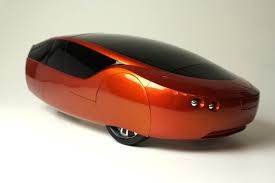Now that we have entered the 21st Century with out advanced technology and empirical data, society cannot turn a blind eye on the global environmental crisis. We must make a change and make it now in order to assure a brighter greener future. Our environmental engineers have been hard at work studying, designing, and implementing new strategies and technologies to help create a more sustainable future. These new technologies are just the start in efforts of helping society move towards a future of less waste, smaller carbon footprint, and decreased energy consumption. We want to take a look at a few examples of how 3D printing is changing the landscape of Environmental Engineering.
more sustainable future. These new technologies are just the start in efforts of helping society move towards a future of less waste, smaller carbon footprint, and decreased energy consumption. We want to take a look at a few examples of how 3D printing is changing the landscape of Environmental Engineering.
WASTE REDUCTION
Many skeptics of the new 3D printing technology have been questioning whether additive manufacturing truly reduces waste. In a new joint study conducted by Metal Laser-Sintering Company and the European Aeronautic Defense and Space Company, we get to examine CO2 emissions, energy and raw material efficiency, and recyclability in the production process and use of a single part. A comparison will be made between traditional manufacturing and Additive Manufacturing using 3D printing in order to determine whether additive manufacturing can in fact reduce waste.
http://3dprintingindustry.com/2013/10/29/benefits-environment-says-eads-eos/
WORLD’S FIRST 3D PRINTED CAR
Three-dimensional printing is known for its ability to change the landscape of the manufacturing industry, but in what way? These new printers are giving designers and manufacturers the potential to create objects never before possible, and some have been taking advantage of this opportunity. Jim Coors  and Jeff Hansen, leaders of the so called “Urbee” project”, decided to develop a new environmentally friendly car built using Fused Deposition Modeling 3D printers. This new car called Urbee gets 200 miles per gallon and is half electric half gas. The Urbee ended up winning many science awards, especially those emphasizing sustainability and environmental impact. The introduction of Urbee has become very popular worldwide and with more exposure to 3D printing, and its ability to develop sustainable products, engineers will continue to push this new technology to help create a better future.
and Jeff Hansen, leaders of the so called “Urbee” project”, decided to develop a new environmentally friendly car built using Fused Deposition Modeling 3D printers. This new car called Urbee gets 200 miles per gallon and is half electric half gas. The Urbee ended up winning many science awards, especially those emphasizing sustainability and environmental impact. The introduction of Urbee has become very popular worldwide and with more exposure to 3D printing, and its ability to develop sustainable products, engineers will continue to push this new technology to help create a better future.
http://3dprintingindustry.com/2012/04/15/worlds-first-3d-printed-car/
ENERGY CONSERVATION
The idea of energy conservation has become the worlds most convenient company go to slogan promoting environmental friendliness. Unfortunately, many businesses are starting to realize how hard it is to truly achieve significant conservation levels. Countless energy conservation techniques have been around for decades, yet these engineering concepts have not been presented with technology advanced enough to fully take advantage of their potential…..until now. One case study on thermoelectics and energy transfer shows how 3D printing has created endless opportunities for scientists and engineers to help capture unused energy.
http://3dprintingindustry.com/2013/05/06/3d-printing-tapping-into-unused-energy/
NEW SIDE TO SOLAR POWER
Looking back five ten years ago solar energy was one of the hottest sustainable energy concepts talked about within the engineering community. Over time it has been shaped and remodeled in a more economic sense in order to access as much of the market as possible. The desire to increase revenue and decrease costs has led to the development of new solar power designs that extend to the entire accessible market, including the individual consumer. With the introduction of 3D printing, engineers are starting to develop solutions and products that are environmentally friendly, socially accessible, and economically feasible. Lets take a look at some of the solar projects that 3D printers are turning into a convenient “consumer kit” reality.
http://3dprintingindustry.com/2013/10/10/3d-printing-solar-solutions/
Related Articles and Case Studies
http://www.kurzweilai.net/3d-printing-lowers-environmental-impact-says-study
